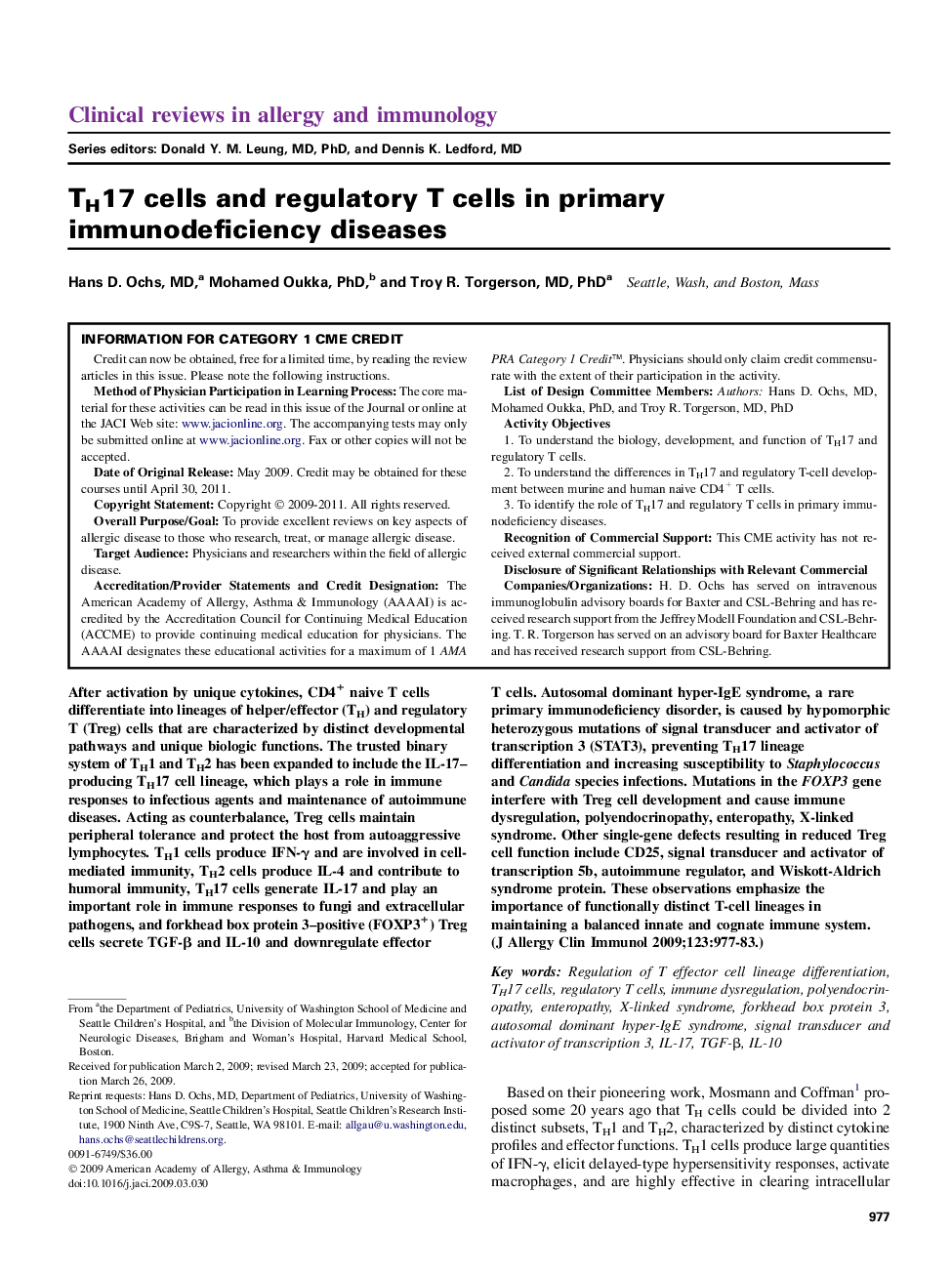| Article ID | Journal | Published Year | Pages | File Type |
|---|---|---|---|---|
| 3200573 | Journal of Allergy and Clinical Immunology | 2009 | 7 Pages |
After activation by unique cytokines, CD4+ naive T cells differentiate into lineages of helper/effector (TH) and regulatory T (Treg) cells that are characterized by distinct developmental pathways and unique biologic functions. The trusted binary system of TH1 and TH2 has been expanded to include the IL-17–producing TH17 cell lineage, which plays a role in immune responses to infectious agents and maintenance of autoimmune diseases. Acting as counterbalance, Treg cells maintain peripheral tolerance and protect the host from autoaggressive lymphocytes. TH1 cells produce IFN-γ and are involved in cell-mediated immunity, TH2 cells produce IL-4 and contribute to humoral immunity, TH17 cells generate IL-17 and play an important role in immune responses to fungi and extracellular pathogens, and forkhead box protein 3–positive (FOXP3+) Treg cells secrete TGF-β and IL-10 and downregulate effector T cells. Autosomal dominant hyper-IgE syndrome, a rare primary immunodeficiency disorder, is caused by hypomorphic heterozygous mutations of signal transducer and activator of transcription 3 (STAT3), preventing TH17 lineage differentiation and increasing susceptibility to Staphylococcus and Candida species infections. Mutations in the FOXP3 gene interfere with Treg cell development and cause immune dysregulation, polyendocrinopathy, enteropathy, X-linked syndrome. Other single-gene defects resulting in reduced Treg cell function include CD25, signal transducer and activator of transcription 5b, autoimmune regulator, and Wiskott-Aldrich syndrome protein. These observations emphasize the importance of functionally distinct T-cell lineages in maintaining a balanced innate and cognate immune system.
